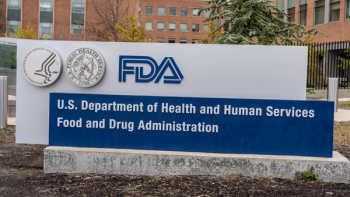
Takeda's New Vaccines Division Charts Course to Global Growth
Today’s vaccines business represents an almost perfect world for big Pharma. There is a vast landscape of unmet medical need; lots of new science.
Today’s vaccines business represents an almost perfect world for big Pharma. There is a vast landscape of unmet medical need; lots of new science; longer product life cycles, with low exposure to post-patent generic competition; greater stability in pricing and supply commitments; more cost-effective manufacturing and delivery technologies; and the reputational gains that come from fulfilling a highly visible public health mission.
While the established players strive to keep their lead, and others contemplate entering the space for the first time, one company-Takeda Pharmaceuticals-is moving to up its game, with a commitment to build a truly global vaccines business founded on its historical roots in Japan, where it began producing vaccines for generations of children and adults in 1946, just months after the end of World War II.
Takeda established the new Global Vaccines Business Division in January 2012 as part of an ongoing corporate restructuring to expand its global footprint after several large foreign acquisitions. The objective is to raise the profile of vaccines to complement other parts of the product portfolio and bolster Takeda’s overall value proposition to customers, particularly in high-growth emerging market countries. As the dominant industry player in its home market, senior management realized that Takeda’s future depended on having an equally strong “rest of world” strategy able to exploit the full range of opportunities in markets with different geographies and income segments.
“Expansion of our vaccines business demonstrates Takeda’s commitment to address unmet needs in global public health through innovation, with a model that is relevant and sustainable for both mature and developing markets,” Global Vaccines Business Division Head Rajeev Venkayya told Pharm Exec.
It also makes good business sense. “Our goal is to recoup the significant investment in R&D while ensuring the broadest access to the vaccine. We will do this through a tiered pricing structure that provides higher margins in wealthier markets with the ability to pay, while offering the same vaccine at lower prices in the low-income developing world.”
Venkayya, who previously headed the vaccines delivery program at the Bill and Melinda Gates Foundation, stressed it is no contradiction to follow a public health mission based on commercial incentives. “In a company, it is difficult to sustain a business with uniformly low or negative margins. We can guarantee that if allowed to make smart pricing decisions based on a market’s ability to pay, we will continue to invest in R&D, and access to our vaccines will not depend on the zip code of one’s birth, but on an appropriate, medically recognized assessment of public health need.”
The new Division is taking a highly focused approach to the vaccine portfolio, one that relies on the strengths of the Japan business in prophylactics for adult and pediatric infectious diseases. In global markets outside Japan, the objective is to establish a lead therapeutic position in additional infectious conditions that meet two specific criteria: (1) a high level of unmet medical need, led by the absence of alternative therapies; and (2) impact on population health, evidenced by global disease burden.
To achieve this, management has acquired two US-based biotech companies-LigoCyte Pharmaceuticals Inc. and Inviragen Inc.-to leverage promising clinical targets against norovirus and dengue fever, respectively. Both diseases fit the group’s portfolio vision. Norovirus is a highly contagious gastrointestinal illness that knows no economic barriers as it exists in both rich and poor countries, affecting children and the elderly disproportionately, and for which there is no existing vaccine or specific treatment.
Likewise, dengue fever is a leading cause of disability, hospitalization and productivity loss in tropical countries, with a ubiquitous transmission vector (mosquito) that is steadily moving north, again with no available preventive measure (aside from vector control) or cure. According to Venkayya, the unmet need around norovirus alone is so great that any first in class product the company presents could quickly emerge as Takeda’s farthest-reaching product.
And prospects appear promising. A bivalent virus-like particle (VLP) candidate for norovirus is completing global Phase II trials. A live attenuated virus candidate for dengue is also is in Phase II, with support from various public health partners based in emerging markets. However, there is significant competition from rivals in these areas, particularly with dengue, where Sanofi has an advanced candidate in vaccine trials; GSK is active here as well.
The acquisitions also give Takeda access to a new recombinant technology development platform along with a few additional candidates at the preclinical and early Phase I stage, including a vaccine for chikungunya, a mosquito-borne virus similar to dengue, and Enterovirus-71, an important cause of hand, foot and mouth disease, which is associated with skin rashes and polio-like neurological symptoms, mainly in children.
In addition to these new areas, the Division is working to enhance its position in seasonal influenza in the domestic Japanese market, leveraging a partnership with the Japanese Government to establish domestic manufacturing capabilities for pandemic influenza vaccine. A new vaccine for Haemophilus influenzae type B (Hib), an important cause of meningitis and upper respiratory tract infections in children, has been submitted for registration and is due for launch hopefully before the end of this year. “We have no intention of neglecting our domestic base. The vaccines business has always been a mainstay of the business in Japan and it is important that this continue,” said Venkayya.
Like any player in vaccines, Takeda must confront operational challenges, which Venkayya describes as building a strong, productive mix around “products, people, and infrastructure.” Even with its expertise in Japan, scaling up globally continues to take the bulk of his time. “Besides refining and growing the pipeline, we have had to internalize talent from our acquired companies and simultaneously build our team in key areas like clinical development, quality assurance, supply chain & logistics, regulatory affairs, policy, and marketing.
The group has to work on aligning the clinical development, manufacturing, and commercial functions, which is critical to any successful launch.” For now, the Division is opting to keep important clinical and process development tasks in Japan, which also remains the base for manufacturing. But many of the new vaccines under test are highly complex and will require additional specialized-and costly-production expertise.
In the three to five year horizon, Venkayya states that success for the new global franchise depends on securing two goals.
First is the preparation for launch of its lead global vaccine candidates for norovirus and dengue, a task that includes building the necessary partnerships with government, NGOs, and other external stakeholders. He notes that the key element in such partnerships is establishing a scientific and clinical basis for prevention; compiling epidemiological evidence linked to amelioration of disease burden; and modeling for proof of cost-effectiveness, based on accepted population health criteria. “This is a long-term process, enough to test the limits of any planning cycle; I know this from experience,” he says. The second goal is to add to the base of the business in Japan, largely through advancement of the pipeline and partnerships to expand the Japanese portfolio further.
Newsletter
Lead with insight with the Pharmaceutical Executive newsletter, featuring strategic analysis, leadership trends, and market intelligence for biopharma decision-makers.





